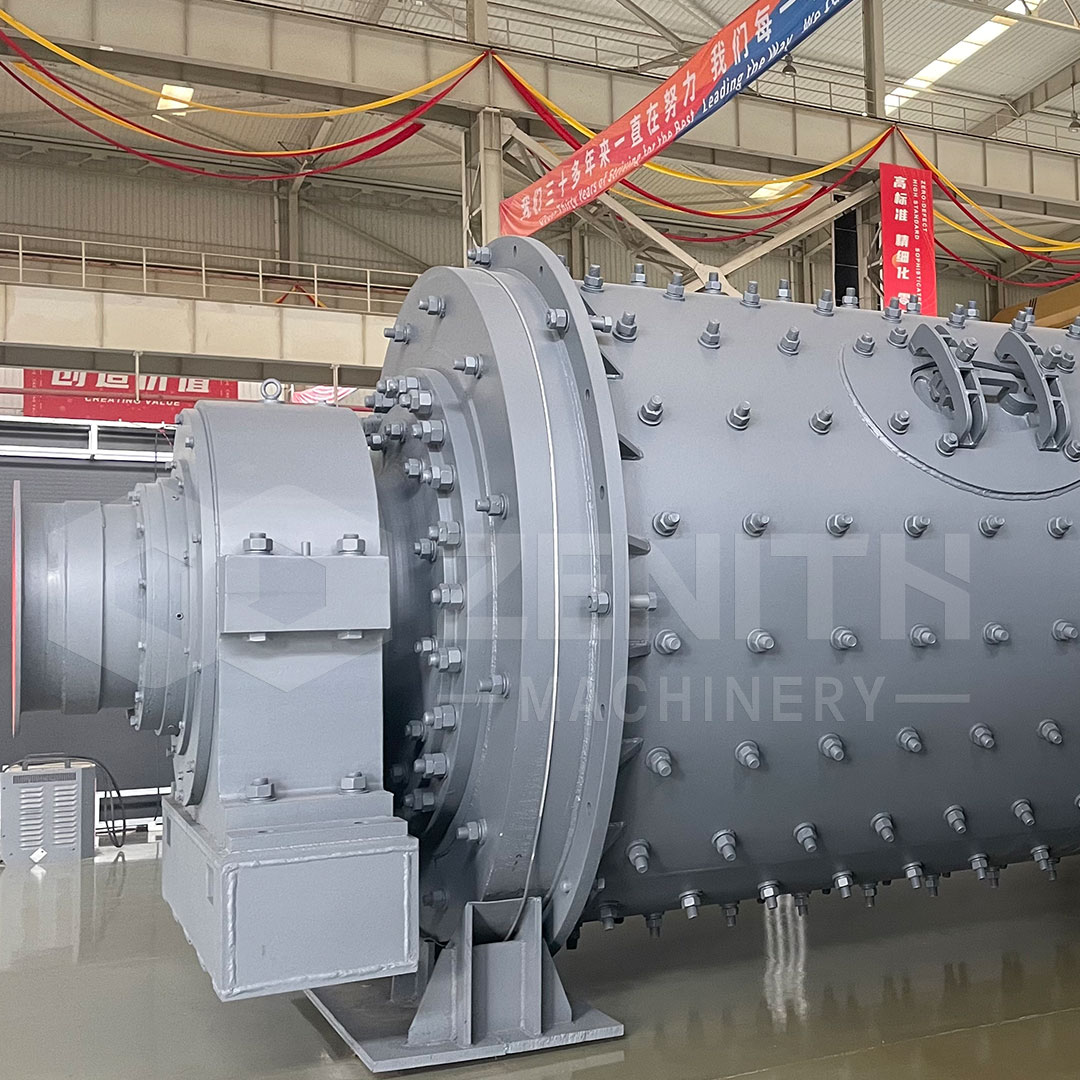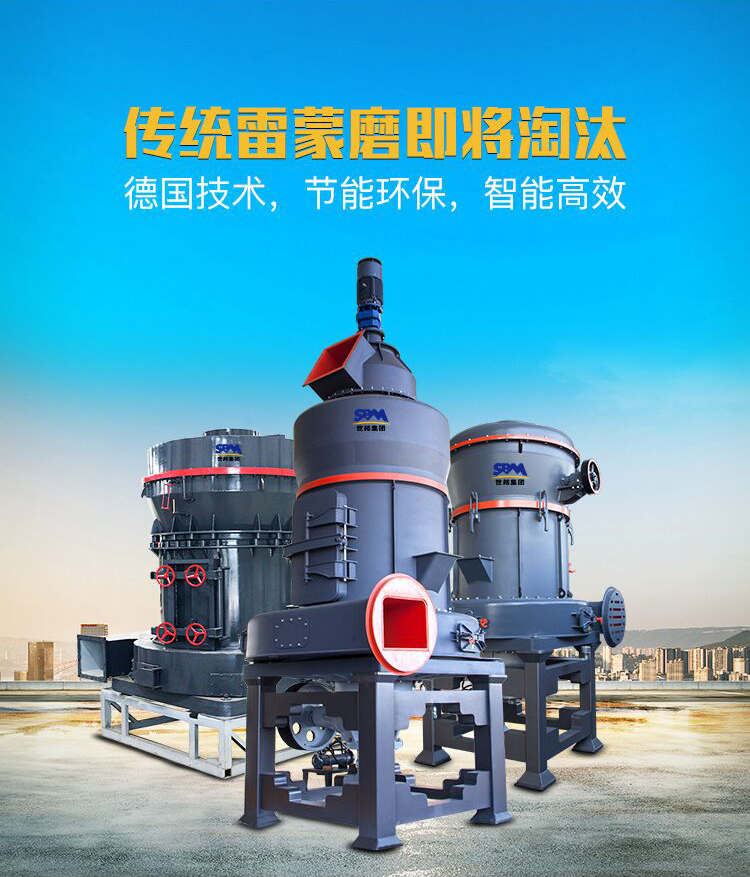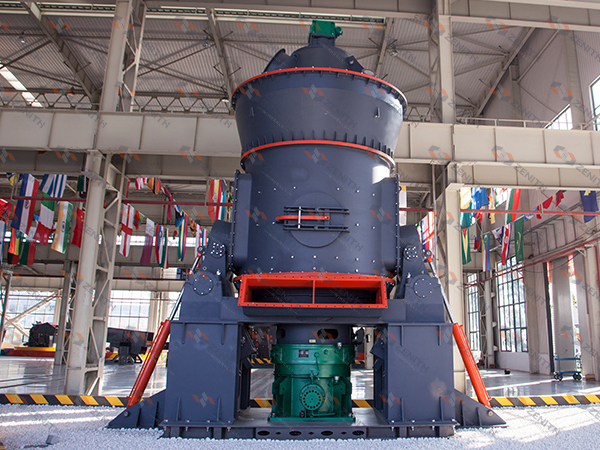What types of grinding mills are used in the cement industry?
2025-11-27 00:56:19
The cement industry relies heavily on efficient grinding technology to transform raw materials and clinker into the fine powder essential for cement production. As a leading manufacturer with decades of experience, Zenith Machinery has developed a comprehensive range of grinding equipment tailored to meet the diverse needs of modern cement plants. These mills handle everything from raw material preparation to final cement grinding with remarkable efficiency and reliability.
Grinding operations account for a significant portion of cement production costs, particularly energy consumption. This makes the selection of appropriate grinding technology crucial for operational efficiency and profitability. Zenith's engineering team has focused on developing solutions that not only meet production requirements but also minimize energy consumption and environmental impact.
_1764176179872.jpg)
Vertical Roller Mills: The Modern Standard
Among the most prominent grinding solutions in contemporary cement production are Vertical Roller Mills (VRMs), particularly our LM Vertical Grinding Mill series. These mills have revolutionized cement grinding with their exceptional efficiency and compact design. The LM series offers capacities ranging from 3 to 340 T/H, handling input sizes up to 70mm and producing fine powder between 80-400 mesh.
The working principle of VRMs involves material being fed onto a rotating grinding table where rollers exert pressure, crushing the material against the table. The ground material is then transported by air to a classifier that separates fine product from coarse material that requires regrinding. This efficient process, combined with the integrated design that reduces footprint by approximately 50% compared to ball mill systems, makes VRMs particularly attractive for new cement plant installations and upgrades.
Our LM Vertical Grinding Mills feature high automation levels with remote control capabilities, significantly reducing labor requirements. The sealed operation under negative pressure ensures minimal dust emissions, addressing environmental concerns while maintaining consistent product quality. These characteristics have made VRMs the preferred choice for many cement producers seeking to optimize their grinding operations.
_1764176179874.jpg)
European Trapezium Mills: Versatile Performance
Zenith's MTW European Trapezium Mill and MTM European Trapezium Mill represent another category of grinding equipment widely employed in cement production. These mills combine reliability with flexibility, producing fine powder ranging from 80-400 mesh with capacities up to 22 T/H for standard models and up to 50 T/H for the largest configurations.
The trapezium mills incorporate several innovative features that enhance their performance in cement applications. The modular impeller adjustment system allows operators to easily modify product fineness by simply changing impellers, providing exceptional flexibility to meet varying product specifications. Additionally, the high-efficiency impeller fan improves air induction efficiency from 62% to 85%, contributing to better material transport and classification.
Perhaps the most significant advantage of our trapezium mills in cement applications is their energy efficiency. Under ideal working conditions, these mills consume more than 60% less energy compared to ball mills of the same grade. This substantial reduction in power consumption translates to significant operational cost savings, making them an economically attractive option for cement producers facing rising energy costs.
Ball Mills: The Traditional Workhorse
Despite the emergence of newer technologies, Ball Mills remain relevant in certain cement grinding applications, particularly for their robustness and ability to handle various materials. Zenith's Ball Mills offer capacities from 22 to 250 T/H and can produce finished products ranging from 0.074 to 3mm. Their strong adaptability to raw materials and excellence in continuous production make them suitable for operations requiring reliable, around-the-clock performance.
The working principle involves a cylindrical rotating chamber containing grinding media (steel balls) that impact and grind the material as the mill rotates. This simple yet effective mechanism provides consistent grinding performance across a wide range of material characteristics. Ball mills can be configured for both open and closed circuit operations and can perform dry or wet grinding, offering flexibility to match specific process requirements.
While ball mills typically consume more energy than vertical mills, Zenith has incorporated design improvements to enhance their efficiency. The hollow shaft is manufactured from high-quality steel casting, and detachable, wear-resistant liners extend service life while reducing maintenance requirements. For certain applications, particularly where product characteristics or existing infrastructure favor their use, ball mills continue to provide valuable service in cement production.

Specialized Grinding Solutions
Beyond the primary grinding technologies, Zenith offers specialized mills for specific applications within cement production. The LM-Y Vertical Pre-grinding Roller Mill serves as an excellent example, designed specifically for pre-grinding cement clinker with capacities ranging from 6 to 330 T/H. This mill integrates sand making and grinding capabilities, providing versatility for operations that require multiple product streams.
For coarse powder requirements, particularly in raw material preparation, our Hammer Mill series offers robust performance with capacities from 3 to 50 T/H, producing 0-3mm coarse powder. The optimized cavity design and unique operating principle ensure stable performance with higher output and grinding ratio compared to traditional coarse powder mills.
Ultrafine grinding applications, though less common in standard cement production, find their solution in our XZM Ultrafine Grinding Mill and LUM Ultrafine Vertical Grinding Mill. These advanced systems can produce powder ranging from 325 to 3250 mesh, serving specialized cement applications and supplementary cementitious materials that require exceptional fineness.

Selecting the Right Mill for Your Application
Choosing the appropriate grinding technology requires careful consideration of multiple factors, including production capacity requirements, material characteristics, desired product fineness, energy availability and cost, space constraints, and environmental regulations. Zenith's technical team works closely with cement producers to analyze these factors and recommend the optimal grinding solution for each specific application.
The trend in cement grinding continues to move toward more energy-efficient technologies, with vertical roller mills increasingly becoming the preferred choice for new installations. However, the diversity of cement production processes means that multiple grinding technologies continue to find their place in the industry. Zenith's comprehensive product range ensures that we can provide the right solution for virtually any cement grinding requirement.
_1764176179879.jpg)
With ISO international quality system certification, European Union CE certification, and Customs Union CU-TR certification, Zenith grinding equipment meets the highest quality and safety standards. Our global presence, with marketing networks covering more than 180 countries and overseas offices in over 30 countries, ensures that technical support and spare parts are readily available wherever our equipment is installed.
Frequently Asked Questions
What is the main advantage of vertical roller mills over ball mills in cement grinding?
Vertical roller mills typically offer 40-50% lower energy consumption compared to ball mills, along with smaller footprint, higher drying capacity, and easier maintenance. Our LM Vertical Grinding Mill consumes approximately 60% less energy than ball mills of equivalent capacity.
Can Zenith grinding mills handle different types of cement raw materials?
Yes, our grinding equipment is designed to process various cement raw materials including limestone, clay, shale, iron ore, and gypsum. Each mill series has specific capabilities, with our LM Vertical Mills particularly well-suited for diverse material inputs.
What fineness range can be achieved with Zenith grinding mills for cement production?
Our mills cover a wide fineness spectrum from coarse powder (1-3mm) to ultrafine powder (up to 3250 mesh). For standard cement production, our vertical mills typically produce between 80-400 mesh, while specialized applications can achieve higher fineness.
How does the energy consumption of MTW European Trapezium Mill compare to traditional mills?
The MTW European Trapezium Mill consumes more than 60% less energy than ball mills of the same grade under ideal working conditions, thanks to its optimized grinding mechanism and efficient classification system.
What automation features are available with Zenith grinding mills?
Our advanced mills like the LM Vertical Grinding Mill feature comprehensive automation including remote control capabilities, automatic lubrication systems, vibration monitoring, and integrated control systems that allow for optimized operation with minimal manual intervention.
Can existing cement plants retrofit Zenith grinding equipment?
Yes, we offer retrofit solutions for existing cement plants looking to upgrade their grinding circuits. Our technical team conducts thorough assessments to ensure compatibility and optimal integration with existing infrastructure.
What environmental benefits do Zenith grinding mills offer?
Our mills operate under negative pressure with sealed systems that prevent dust emissions. Additionally, pulse dust collectors are integrated to meet environmental standards, while reduced energy consumption indirectly lowers carbon emissions.
How does the LUM Ultrafine Vertical Grinding Mill achieve such fine powder?
The LUM mill combines advanced grinding roller technology from Taiwan with German powder separation technology, creating a highly efficient grinding and classification system capable of producing powder up to 2500 mesh with precise particle size distribution.









